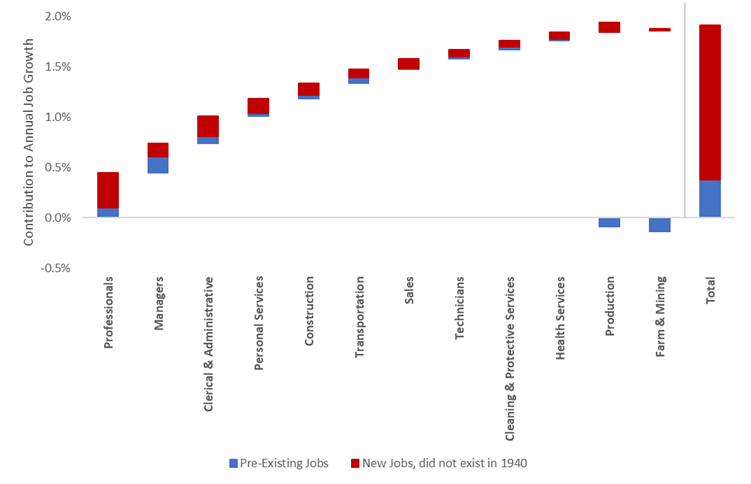Blog
September 2023 Market Commentary

September 2023 Market Commentary
August 2023 and Year-to-Date Market Performance
Most asset classes realized negative returns during August (see Exhibit 1). Two exceptions were high-yield bonds and leveraged bank loans. Within the bond market, U.S. Treasury yields and corporate bond spreads increased, which, while not unheard of, is somewhat unusual. Corporate bond spreads are the additional yield over US Treasurys that corporate bond investors require to be compensated for taking credit risk.
Equities were down by 1.6%, but, at 18.7%, the S&P 500’s year-to-date performance remains quite strong.
Exhibit 1. 2023 Monthly and Year-to-Date Returns

Source: Bloomberg, AAFMAA Wealth Management & Trust
Economic and Market Commentary
This month, I’m proud to share a thought piece written by Senior Portfolio Manager Kristin Ketner Pak that addresses the hype encompassing technology stocks, and, specifically, recent advances in artificial intelligence. As Kristin discusses, we’re excited about the long-term prospects for the sector.
Yours in Trust,
Paul
THE MEANING OF ARTIFICIAL INTELLIGENCE
Kristin Ketner Pak
What is Artificial Intelligence / Generative Artificial Intelligence
There has been much discussion in the press and elsewhere recently about artificial intelligence (AI) and generative artificial intelligence (Gen AI), with some proponents claiming it’s the next big technological revolution akin to the invention of the internet or personal computer, while some skeptics have gone as far to say that AI is a danger to mankind. We would like to dispel the extreme commentary and center around a practical discussion about what AI/Gen AI means from an economic and investing perspective.
First of all, the concept of AI has been around for quite some time. In a 1968 article, Marvin Minsky, a groundbreaking computer scientist and co-founder of MIT’s AI Lab, defined artificial intelligence as “the science of making machines do things that would require intelligence if done by men.” More recently, in a June 2023 article entitled “Why AI Will Save the World,” Marc Andreesen, founder of Netscape and venture capital firm Andreesen Horowitz, said that AI is “the application of mathematics and software code to teach computers how to understand, synthesize, and generate knowledge in ways similar to how people do it.”
The practical use of AI has been around for a while too. For example, face recognition on your phone is AI. Autocomplete in Microsoft Word is AI. Navigation and map apps, like Google and Waze, use AI.
What has garnered so much attention lately, is an advancement in AI, called Generative AI. Gen AI has exploded recently given the launch in November 2022 of ChatGPT. This large language model or LLM, is one of the fastest applications to reach 100 million monthly active users in history, according to UBS research, which was followed shortly by the release of ChatGPT version 4.0, with material advancements in March 2023. Earlier AI technology required humans to write code to train AI models, but Gen AI models, like ChatGPT and OpenAI, have knowledge, language, and reasoning capabilities, and can effectively train themselves.
According to Wikipedia, Gen AI is “artificial intelligence capable of generating text, images, or other media, using generative models. Generative AI models learn the patterns and structure of their input training data and then generate new data that has similar characteristics.” Further to that, according to Goldman Sachs analyst Kash Rangan, Gen AI “allows humans to communicate with a computer in their natural language, which has never been done before.”
What AI/Gen AI’s Impact May Be
Opinions on the level and breadth of Gen AI’s impact on individuals, companies, and society vary widely. Gen AI bull Marc Andreesen seemingly believes its impact will be utopian with every person having “an AI assistant/coach/mentor/trainer/advisor/therapist that is infinitely patient, infinitely compassionate, infinitely knowledgeable, and infinitely helpful.” He continues that “AI will make the world warmer and nicer.” Gary Marcus, Professor Emeritus of Psychology and Neural Science at New York University, on the other hand, humorously epitomizes Gen AI’s limitations by pointing out that “Should you ever find yourself in a situation where the robots are coming for you, just close the door. And it’s still true that robots can’t open doors, nor can they drive cars reliably.”
Marcus explains further that “while AI machines can perform…statistical analysis, they have little to no capacity for deliberate reasoning. And while these machines can learn, this learning largely revolves around the statistics of words and proper responses to prompts; they are not learning abstract concepts and, unlike humans, have no internal model that allows them to understand the world around them.” He sums it up with, “Artificial general intelligence will probably be achieved eventually, but we are very far from it.”
Despite its limitations, though, Gen AI has already had interesting and surprising applications, even in science. For example, in May 2023, Scientists at McMaster and MIT used a Gen AI model to identify an antibiotic to combat a drug-resistant pathogen that the World Health Organization labeled one of the world’s most dangerous antibiotic-resistant bacteria. According to MIT News, “the researchers trained a machine-learning algorithm to identify chemical structures that could inhibit growth of E. coli. In a screen of more than 100 million compounds, that algorithm yielded a molecule that the researchers called halicin, after the fictional artificial intelligence system from “2001: A Space Odyssey.” This molecule, they showed, could kill not only E. coli but several other bacterial species that are resistant to treatment.”
From an Economic Standpoint, Gen AI’s Largest Impact Could be on Labor and Labor Productivity
Despite some disagreement on the reach and timing of Gen AI’s impact, there seems to be some agreement, centered around its potential to meaningfully boost worldwide GDP growth.
Goldman Sachs estimates Gen AI could drive a 7% increase in global GDP annually. McKinsey & Company in a June 2023 report entitled The Economic Potential of Generative AI, estimated that in a base case, Gen AI could add $2.6-4.4 trillion annually to world GDP, or +2.5-4%, and two times that in a bull case, or +6-8% annually, which encompasses Goldman Sachs 7% forecast. And that’s on top of non-Gen AI’s estimated contribution of $11-17.7 trillion, according to McKinsey.
To put that into context, Germany, which is the fourth largest economy in the world behind the U.S., China, and Japan, had an entire GDP of slightly over $4 trillion in 2022. So, at the high end of McKinsey’s base case, Gen AI could add an economy the size of Germany annually to world GDP.
Gen AI could drive GDP, according to economists, by lifting labor productivity. And a Gen AI-boost to labor productivity could come just in the nick of time to offset structural workforce pressures on GDP in the U.S. and developed markets globally. Global growth was slower from 2012 to 2022 than in the two preceding decades due mostly to a slowdown in workforce growth from +2.5% from 1972 to 1982 to just +0.8% from 2012 to 2022.
In many large countries today, the population, and hence, the workforce, is in decline due to declining births and aging populations. Workforces in Germany and Japan, for example, are in decline, while China, the world’s second-largest economy and largest contributor to worldwide growth, posted its first population decline in six decades in 2022. In the U.S., the workforce is still growing, albeit at a slower rate, supported by modest population growth, while lower workforce participation has acted as an offset. The share of working-age people (ages 15-64) in the U.S. shrank from a peak of 67.3% in 2007 to 62.6% today, but the population grew from approximately 300 to 330 million over that time frame. Therefore, the U.S. workforce grew from 202 to 206.5 million over that period.
In addition, as workforce growth has stalled or is declining in some of the world’s largest economies, labor productivity, which was the majority of global GDP growth from 1992 to 2022, has been slowing too (see Exhibit 1), only contributing 2.1% to GDP growth in the last decade as compared to 2.5% in the preceding decade.
Exhibit 1. Employment and Productivity Growth, 1972 - 2022

Source: McKinsey & Company
If Gen AI can meaningfully boost labor productivity, this negative trend could reverse, thereby, boosting economic growth. According to Marc Andreesen, due to Gen AI “productivity growth throughout the economy will accelerate dramatically, driving economic growth, creation of new industries, creation of new jobs, and wage growth, and resulting in a new era of heightened material prosperity across the planet.”
While boosting productivity, Gen AI will probably make some occupations obsolete. Joseph Briggs, Goldman Sachs Global Economist, believes that “Roughly two-thirds of U.S. occupations are exposed to at least some degree of automation by AI with a 25-50% share of their workload that can potentially be replaced.” He predicts administrative positions and tasks in legal professions could be eliminated, for example.
Interestingly, one of the sticking points in the Writers Guild of America and Screen Actors Guild’s ongoing strike against Hollywood studios is the potential that Gen AI could disintermediate writers’ and actors’ roles in film and media.
But it’s not all doom and gloom from a labor standpoint. Joseph Briggs goes on to point out that, “60% of workers today are employed in occupations that did not exist in 1940, implying that over 85% of employment growth in the last 80 years can be explained by the technology-driven creation of new positions.” (See Exhibit 2). So effectively, Gen AI may eliminate some jobs – like a paralegal - while at the same time creating new ones – an artificial intelligence ethics expert, perhaps.
Exhibit 2. Job Growth by Category, 1940 - 2018

Source: (Autor, 2022), Bloomberg, Goldman Sachs, AAFMAA Wealth Management & Trust
What Does This Mean for Investing
The experts believe the investing opportunity behind Gen AI’s impact will be large and revolutionary. According to Sarah Guo, venture capitalist founder of Conviction and former Greylock partner, “This is the biggest technology shift that I’ll see in my investing career—with the vast majority of investment opportunities still ahead of us. We’re in the first inning.” As Goldman Sachs analyst Eric Sheridan further points out, “We’re only around five months into generative AI; the first five months of cloud computing looked like nothing. So, the ability to monetize will grow.” Goldman Sachs analyst Kash Rangan adds that “AI probably isn’t in a hype cycle… this technology cycle isn’t being led by upstarts, which makes it less likely to fizzle out or take a long time to get going.”
The rate of adoption of Gen AI, though, does matter to the timing of the economic impact. Productivity bursts from the invention of the electric motor and personal computer, for example, occurred around 20 years after the technological breakthroughs and only after approximately 50% of U.S. businesses had adopted the technologies. As Sarah Guo highlights, “I bet that this shift will drive substantial value creation, but this is a decade+ transition. As with the internet, mobile, and cloud, some winners emerged immediately, but others only emerged a decade later.” So, investing in Gen AI may require patience, but patience is warranted given the potential size of the opportunity.
If Gen AI does what it is purported to do, all companies that deploy labor should benefit, to some extent at some point, from the labor productivity boost. As Alan Patricof, 88-year-old venture capitalist veteran says, “The AI revolution is probably the single most significant technological development I have seen because the opportunities are ubiquitous. Generative AI is astounding. Artificial intelligence will impact every industry, from healthcare to retail to software. Companies that don’t figure out how to incorporate AI tools will be left behind.”
The earliest and biggest winners, though, will most likely be technology and software companies, the purveyors of AI-related goods and services to corporations. U.S.-based tech companies should be specific beneficiaries as investment in Gen AI is largely concentrated in North America.
Large tech incumbents could be winners given big advantages like scale in distribution, large customer bases, troves of data to train models, engineering talent, and plenty of capital to invest in AI. Cloud computing companies that provide on-demand computer system resources, especially data storage and computing power, like AMZN, GOOGL, and MSFT, should benefit. Picks and shovel companies like semiconductor companies - NVDA MRVL, AMD, AMAT - that sell the chips that drive the computers that power the AI models should also benefit. Software companies – ADBE, CRM, NOW, PANW – that can imbed Gen AI into their products/services to enhance their capabilities and efficiencies should benefit.
The excitement around Gen AI/AI’s potential impact has driven the NASDAQ up +33% YTD. NVDA, which has been the poster child for Gen AI this year, has more than tripled YTD. In NVDA’s case, the fundamentals have lived up to the hype with revenues doubling in Q2 2023, while earnings more than quintupled. Signs of Gen AI’s impact on other tech company’s fundamentals have not been as obvious. Amazon CEO Jassy pointed out on AMZN’s Q2 2023 conference call that “we're in the very early days of adoption and success of generative AI.” He continued with, “It’s very early and so I expect that (it) will be very large, but it will be in the future.”
Patience is warranted as is being selective in investing, but if Gen AI lives up to the expectations and enthusiasm, it will generate tremendous value and wealth for companies and investors for years to come.
Bibliography
Autor, D. (2022). The Labor Market Impacts of Technological Change: From Unbridled Enthusiasm to Qualified Optimism to Vast Uncertainty. Cambridge, MA: National Bureau of Economic Research.
Andreessen, M. (2023, June 6). Why AI Will Save the World. Retrieved from
https://a16z.com/ai-will-save-the-world/
McKinsey & Co. (2023, June). The economic potential of generative AI. The next productivity frontier.
Goldman Sachs (2023, July 5). Global Macro Research. Generative AI: Hype, or Truly Transformative?
MIT News (2023, May 5). Using AI, scientists find a drug that could combat drug-resistant infections. Retrieved
from https://news.mit.edu/2023/using-ai-scientists-combat-drug-resistant-infections-0525
Barron’s (2023, Sep 7). A Venture Capital Pioneer Sizes Up Today’s Market. Retrieved from
https://www.barrons.com/articles/alan-patricof-venture-capital-demographics-ai-eb39d27d
Amazon (2023, Aug 3). Q2 2023 earnings call.
Increase Your Financial Wellness with AWM&T
At AAFMAA Wealth Management & Trust LLC, we are committed to serving the unique financial needs of the military community. Whether you require a complimentary portfolio review, a comprehensive financial plan, assistance with your investment strategy, or trust services, our military wealth management professionals are ready to serve you. Contact us today to set up an appointment with a Relationship Manager who can assess your financial health and customize your personalized action plan.
About Us
Founded in 2012, AAFMAA Wealth Management & Trust LLC (AWM&T) was created to meet the distinct financial needs of military families. We proudly deliver experienced, trustworthy financial planning, investment management, and trust administration services – all designed to promote lasting security and independence.
We are proud to share the mission, vision, and values of Armed Forces Mutual, our parent company. We consistently build on the Association’s rich history and tradition to provide our Members with a source of compassion, trust, and protection. At AWM&T, we are committed to serving as your trusted fiduciary, always putting your best interests first. Through Armed Forces Mutual's legacy and our financial guidance, we provide personalized wealth management solutions to military families across generations.
© 2023 AAFMAA Wealth Management & Trust LLC. Information provided by AAFMAA Wealth Management & Trust LLC is not intended to be tax or legal advice. Nothing contained in this communication should be interpreted as such. We encourage you to seek guidance from your tax or legal advisor. Past performance does not guarantee future results. Investments are not FDIC or SIPC insured, are not deposits, nor are they insured by, issued by, or guaranteed by obligations of any government agency or any bank, and they involve risk including possible loss of principal.
Get In Touch!
Schedule a consultation with one of our expert financial planners today, and let's hit the fast-track to success!
Schedule A Consultation

